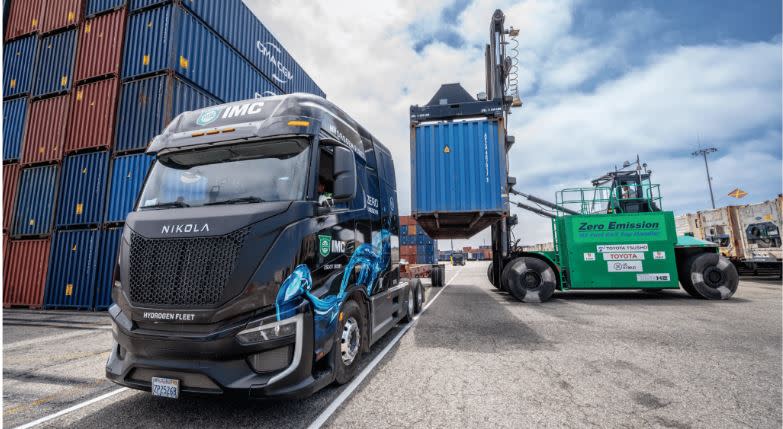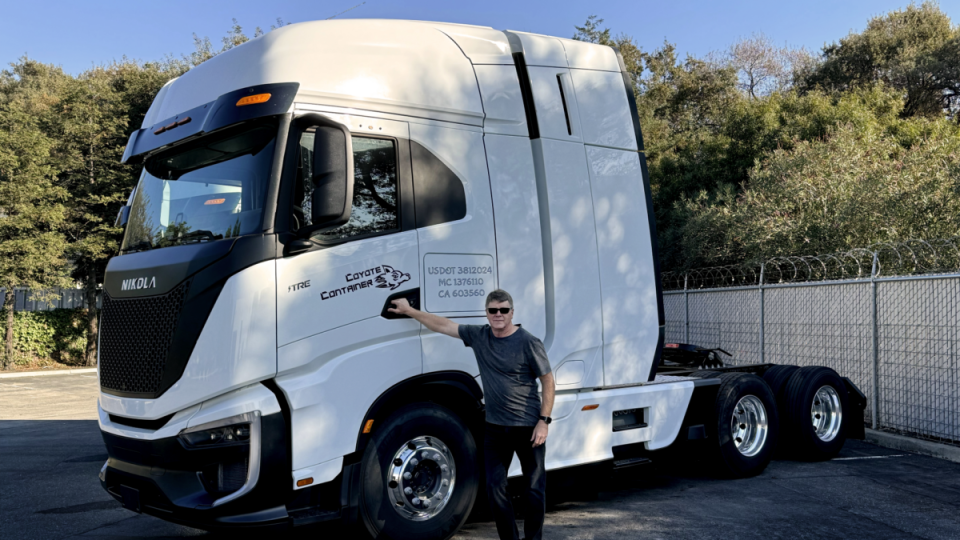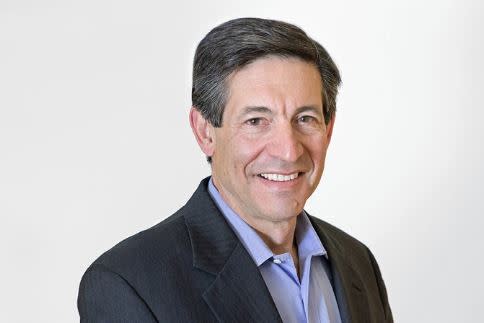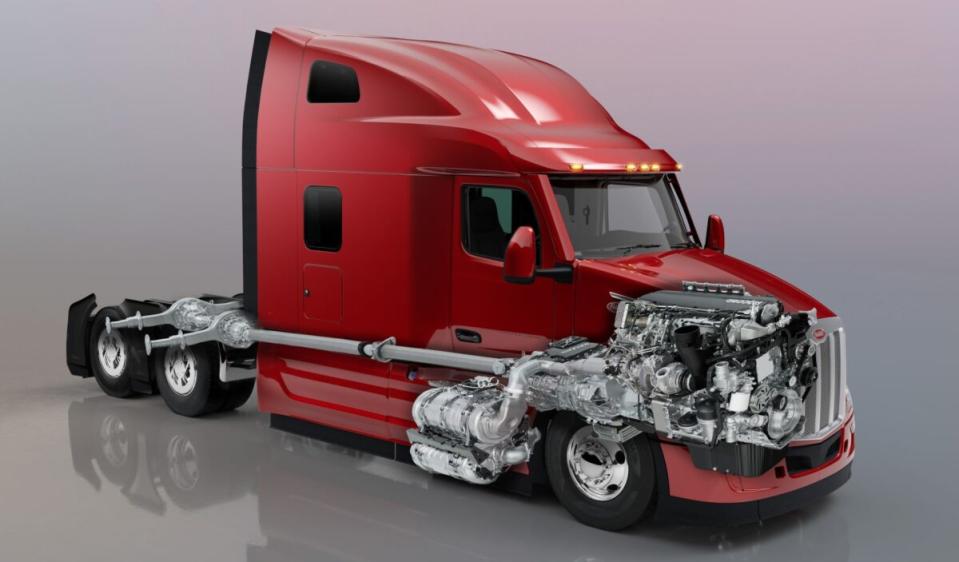Nikola has delivered 75 hydrogen-powered fuel cell trucks to customers. It has an order bank that should begin to produce meaningful revenue. Now it is producing statistical evidence that hydrogen-powered trucking is not just for show.
At two industry conferences this week and in data shared first with Truck Tech, Nikola revealed it has:
-
Completed 1,666 hydrogen fill-ups at three mobile refuelers in Coolidge, Arizona, as well as Ontario and Long Beach, California.
-
Dispensed 60.54 tons of hydrogen.
-
Averaged a fill time of 22.2 minutes in Long Beach and 23.5 minutes in Ontario. That is slightly longer than the 10-15 minutes for a diesel fill-up but much faster than recharging a battery-electric truck.
-
Averaged overall uptime of 95.4% including hydrogen station downtime. The trucks themselves operated 92.9% of the time.


Better fuel economy performance than expected
Nikola’s Class 8 Tre fuel cell electric vehicles averaged 8.13 miles per kilogram of hydrogen on demonstration runs. That’s markedly better than the expected 7.1 or 7.2 miles per kg. A Nikola Tre with five 14-kg hydrogen tanks — a total of 70 kg — can cover about 500 miles. They don’t go that far because some hydrogen always remains in the tank.
Customer trucks used on regular routes average about 7.4 miles per kilogram, Christian Appel, Nikola’s chief engineer, told me.
“In specific applications, we even see 8 or 8 ½ miles per kilogram,” he said. “That translates to better economics on the TCO [total cost of ownership] but also to a higher [driving] range.”
The correlation between the energy in a gallon of diesel fuel, and a kilo of hydrogen is close. A gallon of diesel has about 37 kilowatt hours of energy. A kilogram of hydrogen has about 33 kWh. Traveling 8.1 miles per kilogram of hydrogen is the diesel gallon equivalent of 9.1 mpg. The typical diesel truck averages 6.3 mpg, according to the North American Council for Freight Efficiency.
Driver training and behavior helping reduce total cost of ownership
Driver training about differences between diesel and electric trucks impacts the better-than-expected results, Appel said. That’s especially true for regenerative braking that returns friction energy to the battery.
“We have different levers of regen. The most efficient strategy for drivers is [keeping it] at the highest level and then do one-pedal driving. But that’s not how a lot of drivers drive,” he said.
The average length of haul during demos was 187 miles. The Tre on a full tank of hydrogen can cover 400-450 miles.


Out-of-control hydrogen cost out of Nikola control
One thing Nikola cannot control is the price of hydrogen, most recently selling at north of $32 a kilo. That is far more than what it costs to make. Appel would not say if Nikola is discounting hydrogen for its customers.
“For us it’s really about working with the fleets and making this work,” he said. “It’s about scaling this ecosystem, getting the trucks out there [and] creating the demand, which will drive the price of hydrogen down.”
Nikola gets another chance to stay afloat
The persistent issue for Nikola is the company’s survival.
Shareholders tossed a lifeline earlier this week by voting to allow the board of directors to conduct a reverse stock split and authorize new shares that would further dilute their stake. In each of the past two years, it took multiple adjournments of the company’s virtual annual meeting to round up enough votes to authorize new shares. This year’s proposals passed on the first try. Roughly 548 million shares were voted in favor to 202 million against. The exchange of existing shares for new shares is expected to be in the 1:20 to 1:30 range.
Board expected to act quickly
The board has a year to decide whether to do the reverse split. But it is unlikely to wait long. A reverse split would artificially raise the share price above $1 a share. That would stave off a threatened delisting from the Nasdaq. Nikola shares hit a 52-week low earlier this week leading up to Wednesday’s vote. They closed Thursday at 51 cents.
Facing its second delisting threat in a year, Nikola is unlikely to seek a six-month extension from the Nasdaq when its current six-month grace period expires July 17. Since the authorization of the split clears the way for new authorized shares, the board is likely to move quickly.
Nikola has sold or committed almost all of its existing 1.6 billion shares, which shareholders agreed to double from 800 million last August. Following a reverse split, the total number of outstanding shares would reset at 1 billion.
Drama absent from most recent annual meeting
The company warned that without the approval of the reverse split, it would be limited in raising capital for ongoing operations.
Following criticism and the submission of an alternative slate of directors a few months ago by Trevor Milton, the company’s founder convicted of fraud, Wednesday’s vote lacked drama. Milton pulled his slate after Nikola sued him.
Nikola is still trying to get Milton to pay a $165 million arbitration award, some of which would be used to pay the remainder of a $125 million Securities and Exchange Commission penalty the agency levied against Nikola in 2021.
“We must eliminate the distraction of delisting and position ourselves to raise capital more efficiently and effectively,” Nikola Chairman Steve Shindler said before the vote.


“We believe that if we can achieve a share price at a more consistent level with the Russell 3000 companies, it will encourage investor interest and improve the marketability of our common stock to an even broader range of investors.”
Nikola was dropped from the Russell 3000 in its most recent rebalancing of companies that make up the index.
Mississippi-based battery cell joint venture takes shape
Three major engine manufacturers pouring $1.9 billion into a battery cell-making joint venture leave little doubt that they are on board for the long-term transition to battery-electric trucks.Accelera by Cummins, Daimler Truck North America (DTNA) and Paccar Inc. chose a name — Amplify Cell Technologies — and the former plant manager of Ford’s Blue Oval City in Memphis, Tennessee, as CEO. Kel Kearns will lead the greenfield facility in Mississippi that will generate 21 gigawatt hours of electricity and create 2,000 jobs by 2027 when operations get underway.
The investment was too high for any one company to take on, especially when drop-in fuels, hydrogen fuel cells and other propulsion technologies are trying to get their share of available investment.
“Nobody has enough money to place bets on all of those technologies,” DTNA CEO John O’Leary told me during a recent Truck Tech podcast. “What you’re seeing is more and more sharing.”
Amplify’s geopolitical statement
The move by the three companies is as much a geopolitical statement as it is a manufacturing move. Choosing lithium iron phosphate as the chemical composition for the battery cells reduces reliance on rare earth minerals like cobalt, magnesium and nickel.
Amplify Cell Technologies also becomes a component of a nascent U.S. energy policy that seeks to reduce reliance on China. Tensions suggest escalating tariffs on Chinese goods regardless of who is elected U.S. president this November. Despite a recent flattening of electric truck orders, demand will resume, and batteries to power them will be available in the U.S.
“This partnership enables economies of scale beyond Daimler Truck,” O’Leary said in a news release Tuesday. “It is a key puzzle piece of our battery industrialization strategy, ensuring access to the right battery cell technology at the right cost and right time for our customers.”
Accelera by Cummins’ branding
As Cummins shifts more investment to its former New Power division, the Accelera by Cummins name is becoming a branding statement to distinguish diesel technology, which still has a long run ahead, from Cummins’ efforts in battery-electric, fuel cell and hydrogen-producing electrolyzers. With the acquisition of Meritor, Accelera offers a fully integrated electric platform.
“This is a significant step forward as we continue leading our industry into the next era of smarter, cleaner power,” Cummins Chair and CEO Jennifer Rumsey said in the release.
Cummins does not expect Accelera to break even before 2027.
Accelera’s revenues are rising even as it reports negative earnings before interest, taxes, depreciation and amortization. The parent company is patient because even as the diesel business pays for Accelera’s growth, Cummins’ Destination Zero goal to be carbon-neutral by 2050 requires pursuing advanced technologies.
Paccar: ‘Cost-effective, premium-quality’ battery-electric powertrains
Like the others, Paccar is juggling multiple programs to reduce emissions, It recently sold 150 of its next-generation Peterbilt electric trucks to Einride, among the largest orders of Class 8 electric trucks to date.
Amplify gives Paccar a stable source of batteries for future scaling of electric trucks when orders move into the thousands from the teens and hundreds today.
“Amplify Cell Technologies will enable Paccar to offer customers cost-effective premium-quality battery-electric powertrains that meet their operational and sustainability needs,” Preston Feight, Paccar CEO, said in the release.
Paccar begins taking orders for low-NOx-emission engine
Meanwhile, Peterbilt will begin delivering a diesel engine in the fourth quarter that complies with nitrogen oxide (NOx) emissions rules set by the California Air Resources Board. The revamped MX13 engine meets CARB regulations that aim for a 90% reduction in smog-forming NOx emissions compared with current medium- and heavy-duty diesel engines.
The revamped MX13, available in Model 579, Model 567 and Model 589 trucks, is part of a deal several OEMs and the Engine Manufacturers Association made with CARB to stretch out implementation dates for new lower-emission engines.
Paccar redesigned the pistons, crankshaft and fuel injectors and added a 70% larger aftertreatment system. A compact twin assembly features a 48-volt generator in the flywheel housing and an electric heater in the inlet to reduce NOx. It also includes upgraded internal hardware, a longer selective catalytic converter and upgraded NOx sensor design.


The technology improvements are not cheap. Peterbilt declined to discuss how much more the new MX13 will cost compared to today’s version. ACT Research estimates for CARB-compliant engines range from $25,000 to $40,000 higher than today’s prices.
Peterbilt and sibling Kenworth also offer Cummins’ new X15N natural gas engine with potentially net-zero NOx emissions and power and torque comparable to diesel. But that variant carries a 45% premium to the legacy 12-liter natural gas engine Cummins offers today.
That’s it for this week. Thanks for reading. Your feedback and suggestions are always welcome. Write to aadler@freightwaves.com.
Click here to get Truck Tech via email on Fridays. And catch the latest in major events and hear from the top players on “Truck Tech” at 3 p.m. Wednesdays on the FreightWaves YouTube channel.
The post Nikola stats show H2-powered trucking is for real appeared first on FreightWaves.






